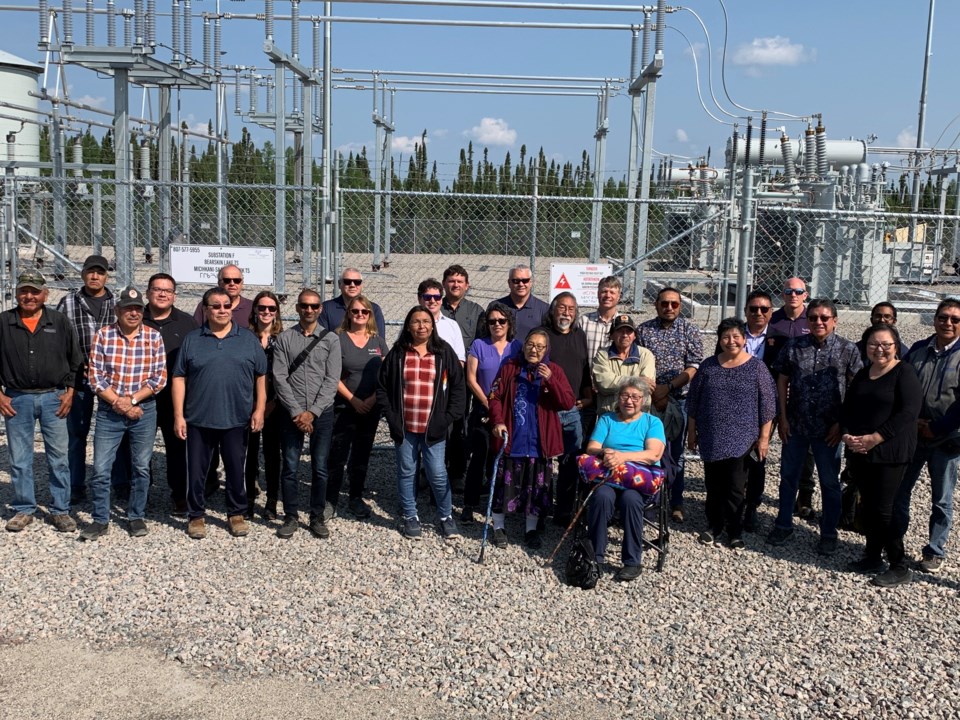BEARSKIN LAKE FIRST NATION — It was a momentous occasion for the people of Bearskin Lake First Nation as they celebrated the energization of their community from Wataynikaneyap Power.
Bearskin First Nation joins Pikangikum First Nation, North Caribou First Nation, and Kingfisher First Nation as now the fourth First Nation to be connected to the provincial power grid through the Wataynikaneyap Power transmission system.
Although the energizing of Bearskin Lake First Nation substation to Wataynikaneyap Power was officially done on July 7, there was extensive testing and troubleshooting to ensure worked properly before the celebration could commence.
With the substation’s success, Bearskin Lake is no longer reliant on diesel generators to power and heat their homes and businesses.
Chief Lefty Kamenawatamin said the energization couldn’t have come at a better time stating that the community’s diesel supply is “already maxed out” and there are still some “outstanding buildings that still need to be hooked up” before the winter.
Bearskin Lake First Nation is located 425 kilometres north of Sioux Lookout, where the added expense on the community for diesel is quite costly to have it flown in throughout the year or transported in on the ice roads in the winter.
Kamenawatamin is looking forward to deleting those costs and moving the community forward.
“We have an upgrade to do on the water and wastewater project, which is a big project for the whole community. There are other buildings that will come along with that project like a water treatment plant, a garage, and there's another big office building we're looking at like to house our health department workers,” said Kamenawatamin.
However, before the winter hits northern Ontario more immediate connections will be made to the existing buildings that are not yet connected to the grid.
Kamenawatamin stated that the community had some mixed feelings during the construction of the power lines. Some people were concerned about the environmental impact of uprooting the trees in the area, while others were concerned about the trap lines that needed to be removed.
Wataynikaneyap Power CEO Margaret Kenequanash acknowledged the communities’ concerns.
"The most important thing that's prevalent in any project development is the respect and the responsibilities that each one must take when, especially when we deal with the land users in their homeland, there are protocols that we must follow and if we don't follow those through those things, then the project won't move forward.”
Kenequanash stated that community engagement is a crucial step in Wataynikaneyap Power’s restoration and permanent access planning.
During this process, Wataynikaneyap Power takes steps to mitigate the environmental impact of clear-cutting trees and bulldozing the area in which they build.
“A lot of it is making sure that everything is off of the right of way, clean up, whatever needs to be done on the ground, maybe some tree planting. So, there are just different aspects of restoration that need to happen to make sure all the wood piles that have been bulldozed are cleaned up. And, a better aspect of the project is permanent access planning in terms of permanent operations perspective. What are we going to need for access to be able to maintain and operate the line? So, those are the two that work hand in hand,” said Kenequanash.
Now that Bearskin Lake is energized, Wataynikaneyap Power sets its sights on the remaining communities in the north.
Kenequanash stated that Wunnumin Lake First Nation community is scheduled to be connected to the line in September.
